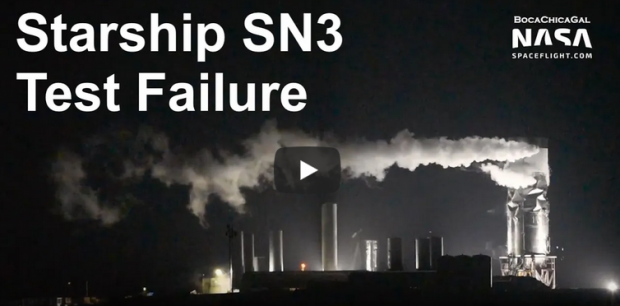
Breaking News
 [Off Grid Build] DIY Rotary Sieve (Trommel) For Separating Stone from Earth (Making Gravel)
[Off Grid Build] DIY Rotary Sieve (Trommel) For Separating Stone from Earth (Making Gravel)
 Exposing the Venezuela Regime Change Scam - with Richard Grove
Exposing the Venezuela Regime Change Scam - with Richard Grove
 California just passed a shocking law to grab your idle Bitcoin
California just passed a shocking law to grab your idle Bitcoin
 Scientists say recent advances in Quantum Entanglement...
Scientists say recent advances in Quantum Entanglement...
Top Tech News
 Kawasaki's four-legged robot-horse vehicle is going into production
Kawasaki's four-legged robot-horse vehicle is going into production
 The First Production All-Solid-State Battery Is Here, And It Promises 5-Minute Charging
The First Production All-Solid-State Battery Is Here, And It Promises 5-Minute Charging
 See inside the tech-topia cities billionaires are betting big on developing...
See inside the tech-topia cities billionaires are betting big on developing...
 Storage doesn't get much cheaper than this
Storage doesn't get much cheaper than this
 Laser weapons go mobile on US Army small vehicles
Laser weapons go mobile on US Army small vehicles
 EngineAI T800: Born to Disrupt! #EngineAI #robotics #newtechnology #newproduct
EngineAI T800: Born to Disrupt! #EngineAI #robotics #newtechnology #newproduct
 This Silicon Anode Breakthrough Could Mark A Turning Point For EV Batteries [Update]
This Silicon Anode Breakthrough Could Mark A Turning Point For EV Batteries [Update]
 Travel gadget promises to dry and iron your clothes – totally hands-free
Travel gadget promises to dry and iron your clothes – totally hands-free
 Perfect Aircrete, Kitchen Ingredients.
Perfect Aircrete, Kitchen Ingredients.
 Futuristic pixel-raising display lets you feel what's onscreen
Futuristic pixel-raising display lets you feel what's onscreen
SpaceX's Elon Musk reveals next Starship's Raptor engines, explains latest failure

On April 3rd, SpaceX initiated the third full-scale Starship prototype's first cryogenic (ultra-cold) pressure test by loading the ~30m (100 ft) tall rocket's upper propellant tank with what was likely 400+ metric tons (~900,000 lb) of liquid nitrogen. For several hours, liquid nitrogen – a chemically-neutral propellant simulant – was loaded and offloaded several times. Finally, around 2:07 am local (07:07 UTC), the liquid oxygen tank below the methane tank abruptly crumpled, reminiscent of a plastic bottle with the air partially sucked out of it. After several long seconds of gradual crumpling, gravity did what gravity does and pulled the heavy upper tank to the ground, shredding the rest of the rocket's thin steel skin.
Both unfortunate and a positive development, Musk has recently confirmed Teslarati's earlier speculation that based on videos of the anomaly, a bad test design and operator error(s) – rather than a technical fault of the rocket itself – could have been the cause of Starship SN3's failure. In other words, barring future operator error-related failures, Starship SN3's second cryogenic test went quite well and should mean no delays to Starship SN4's ongoing assembly.
![]()
By Eric Ralph
Posted on April 6, 2020
SpaceX CEO Elon Musk took to Twitter to better explain what happened when the latest full-scale Starship prototype failed during one of its first tests, while later revealing the rocket engines set to power a future prototype's first flight.
On April 3rd, SpaceX initiated the third full-scale Starship prototype's first cryogenic (ultra-cold) pressure test by loading the ~30m (100 ft) tall rocket's upper propellant tank with what was likely 400+ metric tons (~900,000 lb) of liquid nitrogen. For several hours, liquid nitrogen – a chemically-neutral propellant simulant – was loaded and offloaded several times. Finally, around 2:07 am local (07:07 UTC), the liquid oxygen tank below the methane tank abruptly crumpled, reminiscent of a plastic bottle with the air partially sucked out of it. After several long seconds of gradual crumpling, gravity did what gravity does and pulled the heavy upper tank to the ground, shredding the rest of the rocket's thin steel skin.
Both unfortunate and a positive development, Musk has recently confirmed Teslarati's earlier speculation that based on videos of the anomaly, a bad test design and operator error(s) – rather than a technical fault of the rocket itself – could have been the cause of Starship SN3's failure. In other words, barring future operator error-related failures, Starship SN3's second cryogenic test went quite well and should mean no delays to Starship SN4's ongoing assembly.
Particularly in light of Elon Musk's statement that operator error and a bad test design caused Starship SN3's failure, the ship's April 3rd performance was quite impressive. That SN3 remained vertical for several seconds after its aft tank crumpled and likely lost pressure – despite carrying a load equivalent to a fully-loaded Boeing 747 passenger jet – suggests that the vehicle's structure is extremely robust.
Pretty much. Good news is that this was a test configuration error, rather than a design or build mistake. Not enough pressure in the LOX tank ullage to maintain stability with a heavy load in the CH4 tank. This was done with N2.
— Elon Musk (@elonmusk) April 5, 2020



